Space Shuttle Research
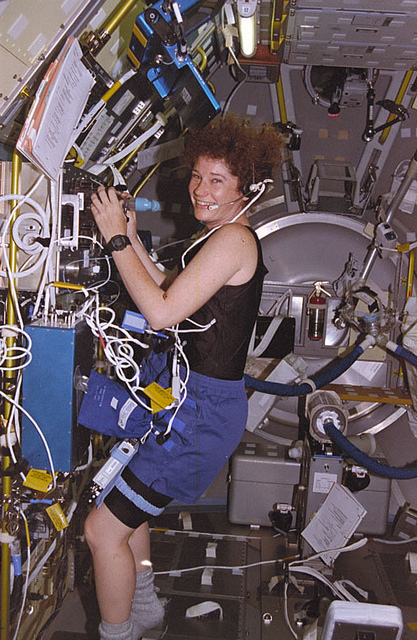
Led by Principal Investigator and division chair John West, the UCSD Physiology/NASA lab's spaceflight research began with the pair of SpaceLab Life Sciences missions aboard the Space Shuttle Columbia on flights STS-40 (SLS-1) in 1991 and STS-58 (SLS-2) in 1993. UCSD's ALFE (Astronaut Lung Function Experiment) system was in the Spacelab, a reusable laboratory located in the payload bay of the Space Shuttle. The system took the astronaut users through setup, calibration, and a battery of lung function tests performed at various times during each flight. ALFE's work in the SpaceLab aboard Columbia continued with the Life and Microgravity SpaceLab flight STS-78 in 1996 and Neurolab flight STS-90 in 1998. The NASA Lab was also part of the "Sleep Team" on the STS-95 mission aboard Space Shuttle Discovery, monitoring the sleep of the astronauts, including Senator John Glenn in his return to space.
A better understanding of the effects of gravity on the human pulmonary system may ultimately benefit clinical medicine on Earth. Also, a comprehension of pulmonary function in microgravity is important for long-term spaceflight.
Spacelabs SLS-1 (STS-40) and SLS-2 (STS-58)
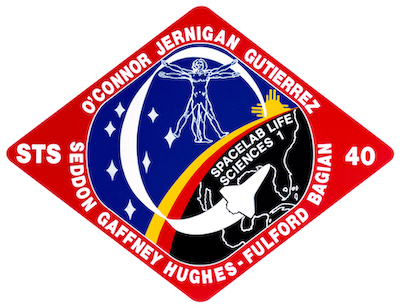
UCSD's Astronaut Lung Function Experiment (ALFE) was the first comprehensive assessment of human lung function during space flight. In a series of tests the crew members measured blood flow through the lungs, the ability of the lung to take up oxygen, lung volumes, and other aspects of respiratory physiology. It flew first on SLS-1 in June of 1991, and again on SLS-2 in October of 1993.
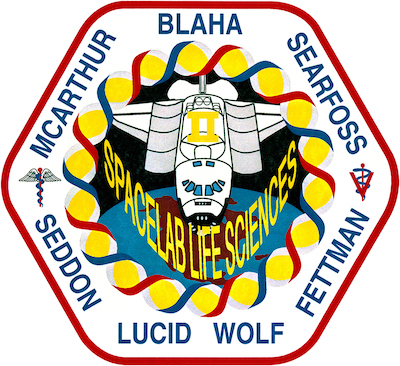
Various gas mixtures were used during the tests, and a gas analyzer system identified and determined the changes in quantities of oxygen, carbon monoxide, carbon dioxide, nitrogen, argon, helium, sulfur hexafluoride, and nitrous oxide that the subjects were inhaling and exhaling. By comparing these test results with results from tests done on Earth before and after the flight, the investigators could examine the effects of microgravity on lung function. Other experiments that monitored cardiac responses augmented this study, such as one which also used a re-breathing technique to study lung and heart function during periods of rest and exercise.
Life and Microgravity Spacelab LMS (STS-78)
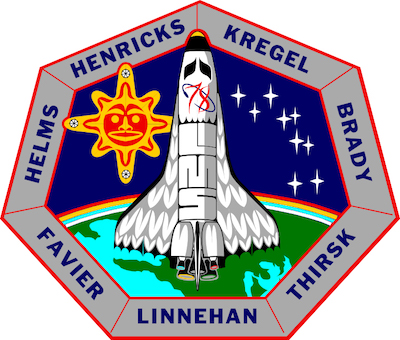 The Life and Microgravity Spacelab mission launched on June 20, 1996. This mission extended the studies of the human lung in four major areas. Investigators studied lung function after the stress imposed by heavy exercise in the microgravity environment; they monitored the motion in the rib cage and abdomen to study the effects of microgravity on the musculoskeletal aspects of breathing during rest, during heavy exercise, and during deep breathing; they made the first measurements in microgravity of the body's response to inhaled carbon dioxide, a response that may be altered by spaceflight; and they continued to build on previous studies of how gas is distributed within the lung.
The Life and Microgravity Spacelab mission launched on June 20, 1996. This mission extended the studies of the human lung in four major areas. Investigators studied lung function after the stress imposed by heavy exercise in the microgravity environment; they monitored the motion in the rib cage and abdomen to study the effects of microgravity on the musculoskeletal aspects of breathing during rest, during heavy exercise, and during deep breathing; they made the first measurements in microgravity of the body's response to inhaled carbon dioxide, a response that may be altered by spaceflight; and they continued to build on previous studies of how gas is distributed within the lung.
A sequence of breathing tests measured the concentrations and volumes of inhaled and exhaled gases before and after exercise several times throughout the LMS mission. The Astronaut Lung Function Experiment (ALFE) hardware developed for SLS-1 and -2 was modified and used with the addition of the Gas Analysis System for Metabolic Analysis Physiology (GASMAP) mass spectrometer and microcomputer. The crewmember inhaled either the ambient air of the Spacelab cabin or one of the test gases, depending on the activity being performed and the measurement being sought. Expired gases were monitored continuously while being directed either into the cabin, into the rebreathing bag, or into an exhaust bag. The Respitrace suit, a vest-like garment equipped with electronics connected to respiratory transducers located at the chest level and at the abdomen, was used for the rib cage/chest motion studies.
Neurolab (STS-90)
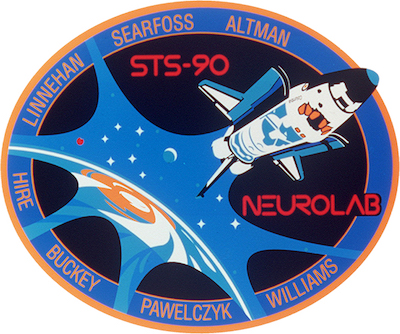
The Neurolab mission (STS-90) launched on April 17, 1998, and landed at Kennedy Space Center on May 3, 1998. For this mission the UCSD team was paired up with a sleep research team from Brigham and Women's Hospital at the Harvard Medical School for their combined project "Sleep and Respiration in Microgravity." Together, they studied the quality of sleep in microgravity and the effect of melatonin on sleep, as well as the contribution of alterations of the control of ventilation to sleep disturbance. The UCSD group also studied the lung function of the crew while awake, performing several pulmonary function tests with the ALFE equipment described above.
There is evidence that sleep is affected by microgravity, but there had been no detailed studies of sleep on orbit. The Sleep Team measured respiration during sleep by instrumenting subjects with a Respiratory Inductance Plethysmograph (RIP) suit and pulse oximeter, allowing continuous measurement of the motion of both the rib cage and abdomen as well as arterial oxygen saturation. In addition, subjects were fitted with an EEG, EOG, a temperature sensor allowing us to determine sleep stage, and with an ECG. All signals were recorded on a Digital Sleep Recorder designed for this research. From these sensors, changes in ventilation, relative rib cage and abdominal contribution to ventilation, thoraco-abdominal asynchrony, sympathetic and parasympathetic contributions to heart rate variability, and the coupling between respiration and heart rate, all could be determined as a function of sleep stage.
In addition, we studied the neurological control of ventilation by measuring the crewmember's response to both hypoxia and hypercapnia using our Astronaut Lung Function Experiment (ALFE) hardware. Preflight, inflight, and postflight, we measured the quasi-isocapnic hypoxia response and the hypercapnic rebreathing response. We also measured cardiac output, diffusing capacity lung water, and resting oxygen consumption. These are supplemented by RIP and pulse oximetry measurements, allowing determination of respiratory timing without the interference of a mouthpiece, as well as arterial oxygen saturation. This provided information regarding the change in ventilatory control and the ventilatory-baroreceptor integrated reflex.
The combination of sleep studies and the awake measurements performed on the same subjects in microgravity shed considerable light on the changes in the neurologic control of ventilation that occur when gravity is removed.
STS-95
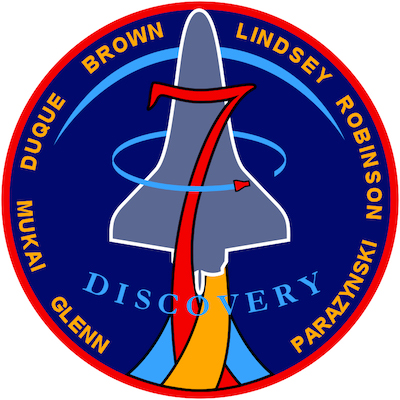 The STS-95 mission launched in October of 1998. Its seven-member crew performed a number of duties, including a variety of science experiments carried in the pressurized SpaceHab module, the deployment and retrieval of the Spartan free-flyer payload, and operations with the HST Orbiting Systems Test (HOST) and the International Extreme Ultraviolet Hitchhiker (IEH) payloads carried in the payload bay.
The STS-95 mission launched in October of 1998. Its seven-member crew performed a number of duties, including a variety of science experiments carried in the pressurized SpaceHab module, the deployment and retrieval of the Spartan free-flyer payload, and operations with the HST Orbiting Systems Test (HOST) and the International Extreme Ultraviolet Hitchhiker (IEH) payloads carried in the payload bay.
The Sleep Team from the previous Neurolab mission, including the UCSD group in collaboration with a group from Brigham and Women's Hospital at the Harvard Medical School, joined forces once again in a sleep experiment similar to that flown on Neurolab. Two subjects were instrumented for sleep with EEG, EOG, and EMG electrodes in a "sleep net," and wore the RIP Suit and harness, which provided respiratory movement, ECG, sound, light, pulse oximetry, and nasal air flow. Body core temperature was measured constantly throughout the flight, and the subjects' cognitive performance was tested on days following instrumented sleep to see how the quality of sleep that the astronauts got affected their performance the next day. The subjects participated in experiment sessions before, during, and after the mission.
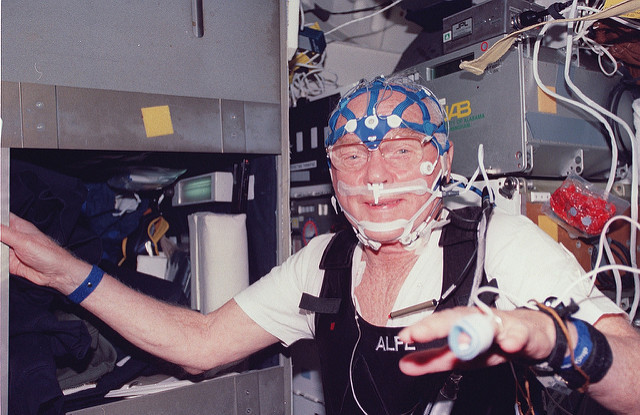
An additional scientific study being performed as part of the sleep study on STS-95 is the study of aging, with John Glenn being one of the participants in the sleep experiment. Certain physiological changes that occur in space also occur with aging: cardiovascular deconditioning, balance disorders, weakening bones and muscles, a depressed immune response, as well as disturbed sleep. An important difference, however, is that these changes are reversible in astronauts. The change in sleep pattern that typically comes with aging is early waking and fragmented or otherwise disturbed sleep. Optimal alertness during the day and sound sleep at night, valuable qualities on Earth and in space, require proper synchronizing of the human circadian pacemaker. Thus, we sought to better understand how aging and space flight affect the mechanisms governing circadian rhythms.
